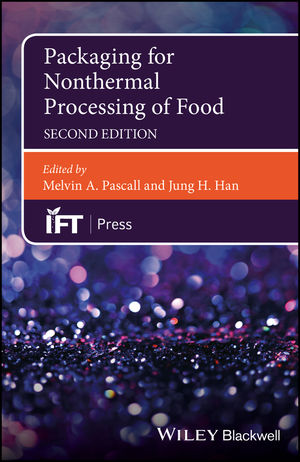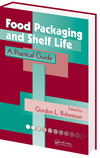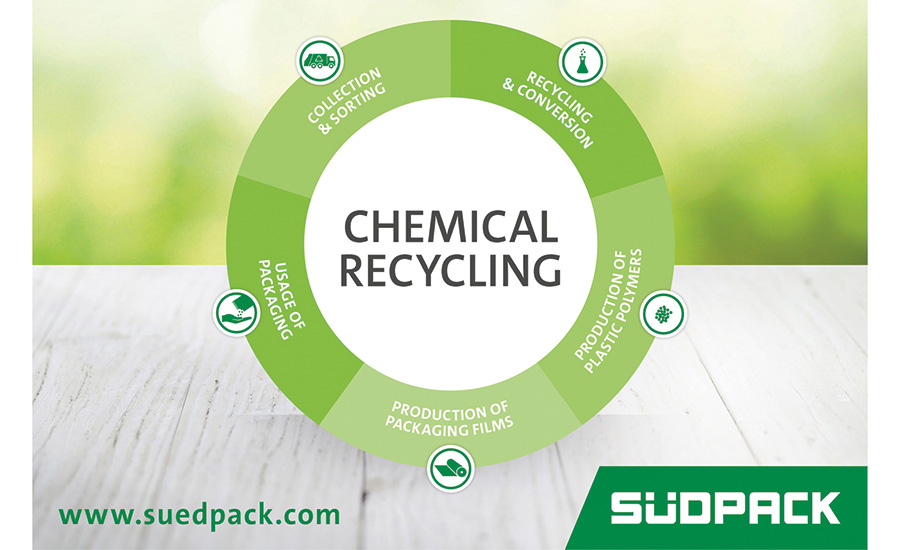Film Suppliers and Food Companies Sharpen Plans for Sustainability Goals
Sustainable mandates are arriving in the next five years, and consumer packaged goods (CPG) companies and suppliers are collaborating to find answers to meet this difficult challenge.




During the recent BNP Media-sponsored virtual Global Pouch Forum, David Luttenberger, global packaging director at Mintel, explained numerous consumer trends revolving around COVID-19 and post pandemic, but he also discussed sustainable packaging mandates coming in the next five years. Luttenberger shared with the virtual audience a recent comment from Roberta Barbieri, VP of global sustainability at PepsiCo, about achieving commitments to 100% recyclable material by 2025 or 2030.
“There simply isn’t enough recycled content today in the supply chain to reach our goals,” says Barbieri. “The only way to make more is to drive higher recycling rates.”
While this feedback is not surprising to many industry watchers, PepsiCo reported a new target in late 2019 to reduce 35% of virgin plastic content across the beverage business by 2025. PepsiCo also reiterated its 2025 packaging goal to make 100% of the company’s packaging recyclable, compostable or biodegradable, and increase the use of recycled content in plastic packaging to 25%.
The bottom line is: Packaging film suppliers and consumer packaged goods (CPG) companies are pushing hard to add more recycled content into the supply chain. One project working toward this goal is the Materials Recovery for the Future (MRFF) consortium. It is demonstrating a pilot project to capture flexible plastic packaging (FPP) in a large, single-stream material recovery facility — J.P. Mascaro and Sons in Birdsboro, Pa. — via traditional optical sorting capacity and peripherals.
The consortium is a who’s who in the flexible packaging materials and CPG space. The American Chemistry Council (ACC) recruited Procter & Gamble, Nestle USA, Unilever, Amcor, Kraft Heinz, Mars Inc, Plum Organics, Sealed Air, the Association of Plastic Recyclers (APR) and LyondellBasell, to name a few.
The pilot is demonstrating the ability to produce a commodity bale of FPP, called rFlex, and can be “repurposed for over a dozen end-market product opportunities, like roofing materials, exterior environment products, and longer-term consumer products and packaging,” according to the recent 2020 report, called, “Flexible Packaging Recycling in Material Recovery Facilities Pilot.”
Back in 2015, the pilot program investigated three essential recycling system elements: processing, end markets and community collection. Fast forward to 2020, and the report, prepared by the Resource Recycling System (RRS), “shows that within one year of installing FPP sortation equipment at the TotalRecycle MRF in Pennsylvania, four of the five sortation performance goals established for the pilot demonstration were achieved, and the program continues to progress toward achieving the fifth goal.”
This fifth goal is a crucial metric — executive summary here — and it promotes a 90% capture rate of FPP. However, the metric sits at 74% as of February 2020. Other milestones met in 2020 include minimizing paper in the rFlex bales by 11% to 14%, reducing the amount of FPP going into fiber products and a sizable reduction of quality control staff.
A notable finding in the 2020 report also demonstrates that the pro forma modeling and costs for curbside collection of FPP reveals the price to be on par with other curbside recyclables, such as polypropylene.
Comprehensive Industry Action
As the U.S. recycling pilot project moves forward and gains momentum, Europe continues to further its advanced recovery systems. In Germany, light household packaging is separated from glass and paper, and brand owners support these collection costs via the Green Dot packaging fee. Brand owner costs are dependent on the amount of packaging material included in the product.
With this in mind, Amcor Plc has been leading the way in developing mono-material films and promoting new products that drive lower costs for CPG brands. Back in September, the company announced the “world’s first recyclable flexible retort pouch for Nestlé in the Netherlands using Amcor’s AmLite HeatFlex Recyclable solution.”
“Amcor and Nestlé together created a unique solution that for years was thought impossible,” says Michael Zacka, president of Amcor Flexibles EMEA. “This high-barrier, high-heat resistant packaging can be easily recycled within plastic recycling streams already existing in several European countries.”
The packaging film uses three layers for the retort packaging: Heatflex Recyclable oriented polypropylene, AmLite barrier and polypropylene to protect the cat food product that made its way to shelves in October 2020. In 2018, Amcor also announced its intention to develop all its packaging to be recyclable or reusable by 2025, and this new pouch meets the packaging guidelines recently published by the CEFLEX Consortium.
The trend of recycled materials use is, most importantly, taking hold in new end-use markets like building materials but also for reusable pallets. Recently, Palletplast, a South African company, won the 2020 Institute of Packaging of South Africa’s Gold Pack trophy for its rPET Plastic Pallet. The pallet uses up to 97% rPET material and has been used in the fruit industry to haul as much as to 1,200 kg of product.
Other uses of post-consumer recycled (PCR) material in the U.S. include Hella Nuts Eatery, a plant-based eatery and food company based in Oakland, Calif., and its flexible plastic stand-up pouches for its innovative ground walnut meat product. The company sells into local high-end grocery stores or eCommerce channels, and it wanted an impactful package to promote awareness of the relatively new product while still retaining its sustainability philosophy.
The company offers frozen walnut meat in 1-lb and 3-lb stand-up pouches while using pouches made up of PCR material in each film layer. “Pure recyclable packaging has to be taken to a specific location, and it becomes the responsibility of consumers — this was too complicated,” says Kami Quinones, chef and owner of Hella Nuts Eatery.
Advanced Plastics Recycling
While PCR material may be a good fit for product runs under 1,000 units, large food producers are evaluating multiple solutions to meet their ambitious sustainability mandates for 2025/2030. Besides bets on improved MRF facilities and policies across the board, CPGs are watching as petrochemical and other industrial players put research into advanced plastics recycling technology. Also known as chemical recycling, the technology refers to several different technologies that convert post-use plastics into original building blocks, specialty polymers, new plastic feedstock, fuels, waxes or other products.
LyondellBasell Industries recently announced the successful start to its chemical recycling pilot program, called MoReTec, at its recycling facility in Ferrara, Italy. LyondellBasell is one of the largest plastics, chemicals and refining companies in the world, and 2020 has shown that many oil-based companies are looking for alternative revenue streams. For example, Shell and BP released detailed plans to diversify their product roadmaps and reduce their operational carbon footprints in relatively short time.
For LyondellBasell, the objective of this chemical recycling plant is to return post-consumer plastic waste to its molecular form for use as a feedstock for new plastic materials.
“With our advanced plastics recycling technology, we return larger volumes of plastic waste back into the value chain and produce new materials for high-quality applications, retaining their value for as long as possible,” says Jim Seward, senior VP of research and development, technology and sustainability, LyondellBasell.
Back in 2018, LyondellBaseel and Karlsruhe Institute of Technology collaborated on the laboratory research for the MoReTec technology, which has led to the Ferrara pilot plant build. The objective is to create scalable plastic materials to be used in food packaging and healthcare items.
Südpack is also making strides in the chemical recycling area with the announcement of a collaboration with Receso, a specialist in the implementation of systems for resource recovery. A flexible film supplier, Südpack announced that its collaboration with Receso moved to the pilot plant stage to convert mixed plastic fractions into a usable liquid and universal hydrocarbon mixture that can be reused as a raw material for producing plastics. The direct byproducts are pyrolysis oil and virgin-grade resin, slated for product packaging in the food and medical industries.
“The design complies with international standards for industrial applications and is used for the testing and further development of chemical recycling in Germany,” says Christian Haupts, managing partner, Recennso GmbH.
The Elusive Finish Line
Moving to a circular economy is an enormous challenge, but new materials, strong recycling developments in the U.S and Europe, and a comprehensive approach from suppliers and end users seem to be gathering momentum for meeting 2025/2030 sustainable company mandates.
Looking for a reprint of this article?
From high-res PDFs to custom plaques, order your copy today!









